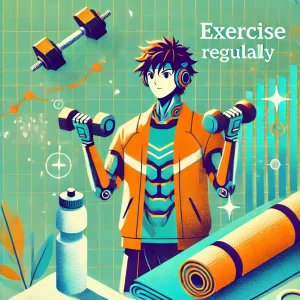Do’s and Don’ts of the High-Protein Diet: How to Maximize Muscle Gain and Fat Loss
Introduction
The High-Protein Diet is designed to help you lose fat and build muscle by increasing your protein intake while moderating carbohydrates and fats. However, to achieve the best results, it’s important to follow the right guidelines and avoid common mistakes. This list of essential do’s and don’ts will  help you stay on track, optimize your protein intake, and achieve your weight loss and muscle gain goals.
help you stay on track, optimize your protein intake, and achieve your weight loss and muscle gain goals.
Do’s of the High-Protein Diet
1. Do Prioritize Lean Proteins
Lean proteins like chicken, turkey, fish, eggs, and tofu are excellent sources of protein that support muscle growth and fat loss without adding excessive calories or unhealthy fats. Make sure to include a source of lean protein in every meal to maximize the benefits of the High-Protein Diet.
2. Do Pair Protein with Non-Starchy Vegetables
Vegetables like spinach, broccoli, and bell peppers are low in calories and carbohydrates but high in fiber, vitamins, and minerals. Pair your protein with non-starchy vegetables to create balanced meals that support weight loss and provide essential nutrients.
3. Do Drink Plenty of Water
Staying hydrated is essential for protein metabolism, muscle recovery, and overall health. Make sure to drink at least 8 glasses of water per day, especially if you’re consuming more protein, to support digestion and prevent dehydration.
4. Do Include Healthy Fats
While the High-Protein Diet emphasizes protein, healthy fats are still an important part of a balanced diet. Include sources of healthy fats like avocado, nuts, seeds, and olive oil to improve satiety, support overall health, and keep your meals satisfying.
5. Do Plan Your Meals in Advance
Meal planning is key to success on the High-Protein Diet. Take time each week to plan your meals and snacks, focusing on lean proteins, vegetables, and healthy fats. This will help you stay on track, avoid unhealthy choices, and ensure that you’re getting enough protein to meet your goals.
Don’ts of the High-Protein Diet
1. Don’t Overdo Processed Meats
While processed meats like bacon, sausages, and deli meats are high in protein, they’re also high in unhealthy fats, sodium, and preservatives. Limit your intake of processed meats and focus on whole, unprocessed protein sources like lean meats, fish, and eggs.
2. Don’t Neglect Carbohydrates Entirely
Carbohydrates provide energy for workouts and daily activities, so it’s important not to eliminate them entirely. Focus on including small portions of complex carbohydrates like quinoa, oats, or sweet potatoes in your meals to provide sustained energy without spiking blood sugar.
3. Don’t Forget About Fiber
Protein-rich diets can sometimes be low in fiber, which is essential for digestion and overall health. Make sure to include fiber-rich foods like vegetables, legumes, and whole grains in your meals  to promote healthy digestion and prevent constipation.
to promote healthy digestion and prevent constipation.
4. Don’t Rely Solely on Protein Supplements
Protein powders and supplements can be a convenient way to boost your protein intake, but they shouldn’t replace whole foods. Focus on getting the majority of your protein from natural sources like lean meats, fish, eggs, and legumes to ensure you’re getting a wide range of nutrients.
5. Don’t Overeat, Even Protein
While protein is essential for muscle growth and fat loss, it’s still important to watch your portion sizes. Overeating, even protein, can lead to excess calorie intake and slow down your weight loss progress. Practice portion control and focus on balanced meals that include protein, vegetables, and healthy fats.
Conclusion
The High-Protein Diet is an effective way to lose fat and build muscle by increasing your protein intake and focusing on nutrient-dense foods. By following these essential do’s and don’ts, you can optimize your diet, prevent common pitfalls, and achieve your weight loss and muscle gain goals. Prioritize lean proteins, pair them with vegetables, and avoid processed meats to ensure long-term success on the High-Protein Diet.